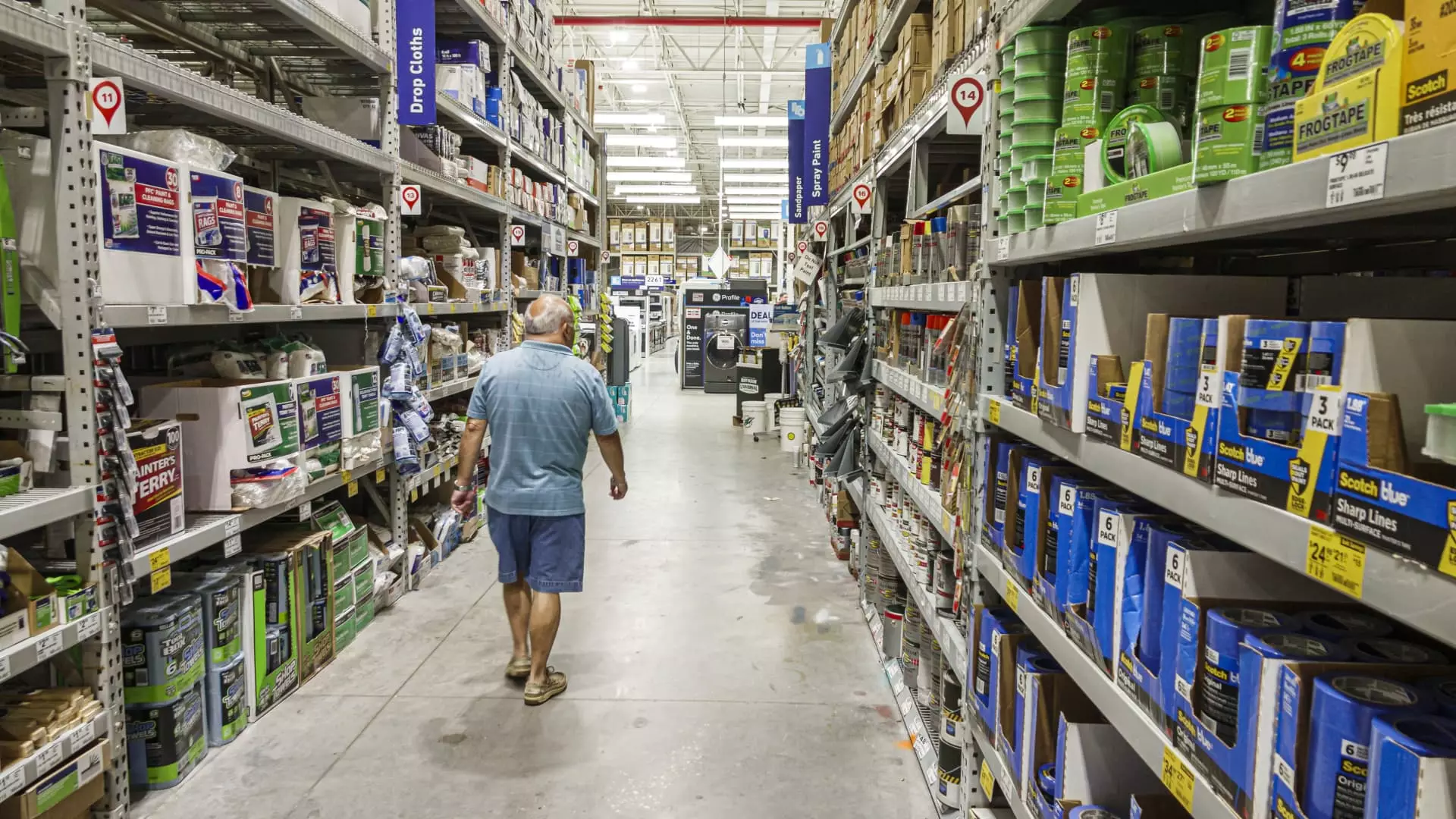Inflation, a critical economic indicator, has shown signs of moderation across the United States. Various segments of consumer spending, particularly in goods like furniture and gasoline, have experienced notable declines over the past year. Deflation, the decrease in the general price level of goods and services, is an unusual phenomenon in the broader economy, as economic experts highlight. Despite some categories experiencing price reductions, the overall outlook suggests that sustained downward trends in prices remain rare. For many, this raises questions about the broader implications for consumers and businesses alike.
Mark Zandi, the chief economist at Moody’s, emphasizes that while there may be some reductions in physical goods, overall price cuts beyond that remain infrequent. Businesses, he argues, are reluctant to reduce prices significantly, preferring to maintain stability even when consumer demand softens. His assertion that significant price drops are atypical holds true, especially during economic recessions when price reductions hardly manifest.
The pandemic catalyzed a dramatic shift in consumer behavior. Initially, as lockdowns ensued, many consumers pivoted from spending on services—such as travel and dining—to physical goods, creating a buying frenzy. This behavior was compounded by increased disposable income from relief measures and the temporary halt on other forms of expenditure. Such dynamics exacerbated existing supply chain disruptions, leaving consumers eager yet unable to obtain desired products, which in turn contributed to rising prices.
As the unique pressures from the pandemic have lessened and supply chains have gradually normalized, prices are beginning to reflect the recovery. The consumer price index indicates that several categories of goods have witnessed price deflation—a trend that many economists attribute to the gradual return of market equilibrium. For instance, the price index shows a notable fall in household items, appliances, and clothing, highlighting shifts that consumers can discern within their budgets.
The automotive market exemplifies this deflation trend most vividly. With new and used vehicle prices showing declines, Sarah House from Wells Fargo Economics points out that this “give back” in automobile pricing is a natural correction after significant spikes earlier in the inflation cycle. Following dramatic increases, such as used car prices surging by 45% in mid-2021, the subsequent price corrections signify not just deflation but also a return to more stable market conditions.
Moreover, the Federal Reserve’s policy decisions to raise interest rates played a pivotal role in cooling demand across various sectors, including automotive financing. Elevated interest rates have inadvertently led to reductions in consumer purchasing power for cars, further pushing vehicle prices downward. Following a recent shift, with a new interest rate-cutting cycle initiated, market participants are watching for signs of a potential recovery in consumer demand.
The robustness of the U.S. dollar relative to other global currencies has been another key factor in moderating domestic prices. A stronger dollar lessens the cost burden when importing goods, presenting U.S. companies an opportunity to offer products at lower prices. This correlation impacts the availability and affordability of imported products, contributing to lower overall inflationary pressures.
Food and energy prices present a complex picture, influenced by fluctuating commodity prices and unique supply-demand interactions. For example, gasoline prices have dropped significantly since September 2023, while various food categories, from apples to seafood, have also demonstrated price decreases. Understanding these trends provides insights into the factors shaping consumer choices and economic stability.
As the economic landscape continues to evolve, the future of inflation remains uncertain. While current trends reflect gradual deflation in specific sectors, substantial shifts in consumer behavior and business practices need to be acknowledged. The ongoing increase in the quality of consumer electronics, for instance, may mask inflation’s impact in that domain as consumers receive more value for similar expenditures.
Understanding the intricate dynamics of inflation, deflation, and consumer behavior is essential as we navigate these changing economic conditions. Stakeholders must remain vigilant, adapt strategies, and anticipate potential repercussions—whether through rising prices or renewed consumer demand—as we advance into a post-pandemic economy.


Leave a Reply